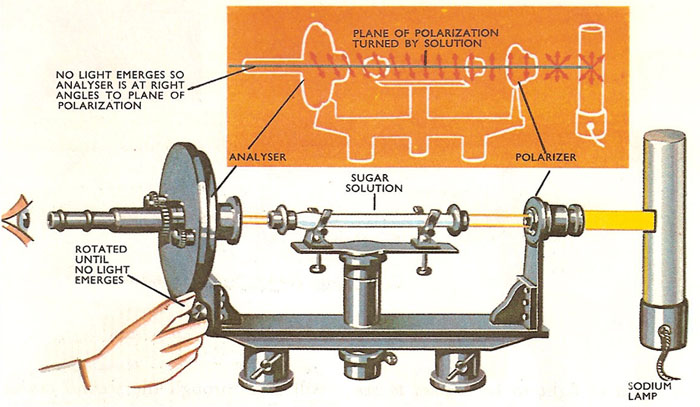polarimeter

The plane of polarization of the sodium light from the polarizer is rotated as it passes through a solution of optically active substances such as sucrose. The extent of the rotation is determined by rotating the analyzer until no light reaches the observer. The slits in the analyzer are then at right angles to the final plane of polarization.
A polarimeter is an instrument that uses two Nicol prisms, one fixed (the polarizer) and one rotatable (the analyzer), with a sample between them, to measure optical activity and other aspects of polarization. It is used in chemical analysis (notably for measuring sugar concentrations), to study molecular configurations, and to study the strain in materials showing double refraction.
In 1811, the French astronomer François Arago invented a simpler device, known as a polariscope, which could determine whether or not light is polarized. Thirty years later, in 1841, he went on to invent the polarimeter by putting a glass slide, or pile of glass slides, in front of a polariscope and inclining the slide in order to determine the proportion of polarized light.


